The intense demands of precarious, dynamic habitats and perilous long-distance migrations has resulted in many remarkable adaptations.
By: James Lowen
Suitable habitat is often compressed, and numerous individuals of many species share this space. It is only through diversification that all can survive: adopting different approaches to target different prey in different microhabitats. Moreover, shorebirds’ requirements shift throughout their extraordinary life cycle – what Red Knots (Calidris canutus) demand on Arctic breeding grounds is not necessarily what they need on Chilean wintering grounds. Birds are equipped with the right tools at the right time for their particular trade – just as a plumber needs pliers but a carpenter needs screwdrivers.
The Short and Long of It
The longer its legs the deeper it can wade. Shorebirds typically inhabit the shifting boundary between wet and dry. To use this dynamic and variable habitat, shorebirds have long legs compared to most birds allowing them to feed in watery habitats without soaking body feathers. But variations in leg length between shorebirds disperse different species across wetlands, grasslands, and coastlines, avoiding competition.
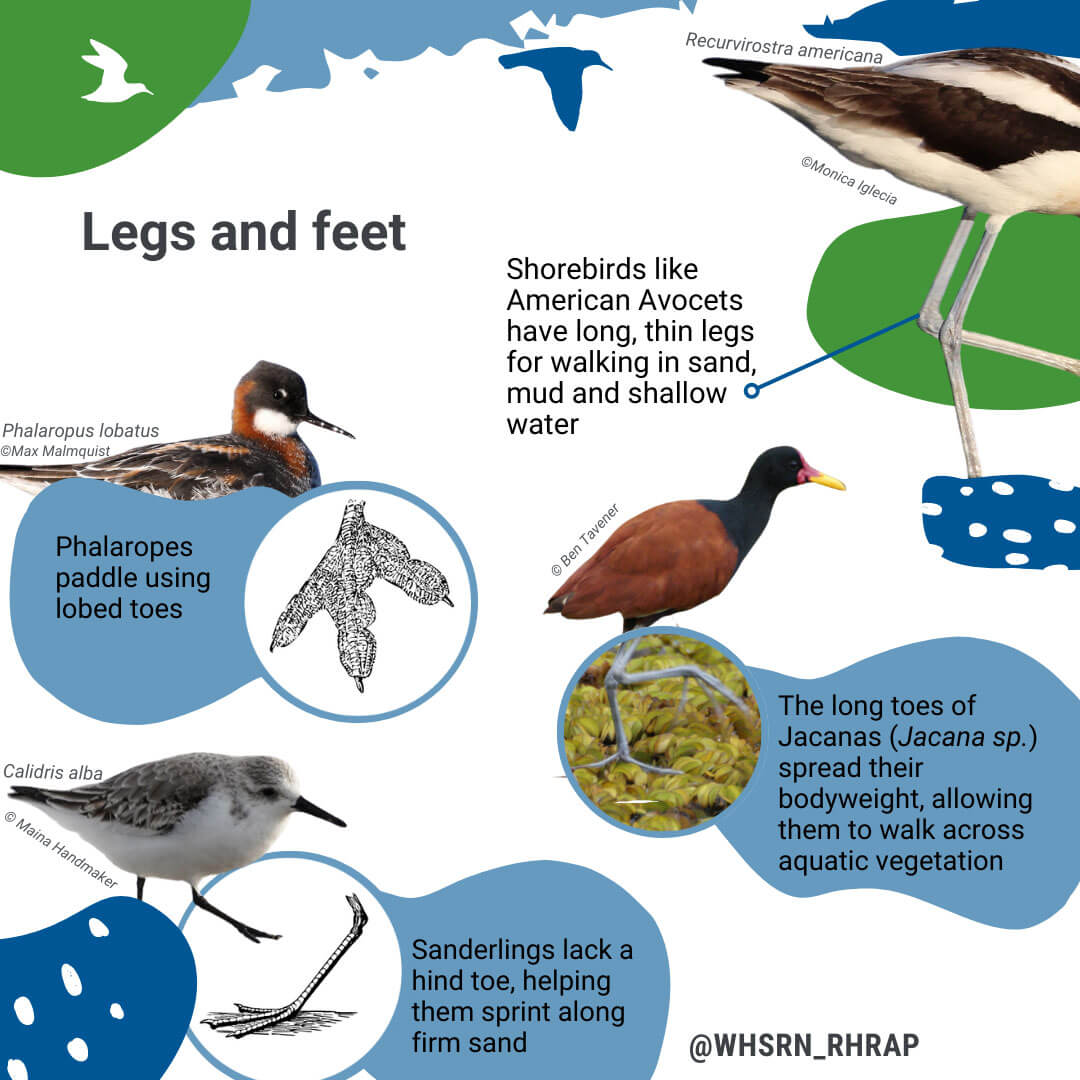
Pick, Probe, Pry
Shorebirds’ bills provide even more compelling illustrations of evolution, strongly influencing where, how and on what they feed. The longer a shorebird’s bill, the deeper it prods; this means that Willet can feed alongside the much longer-billed Marbled Godwit (Limosa fedoa) without competition. Sandpipers (Calidris) typically have a lengthier, narrower bill, which enables them to both pick amphipods off surface water and probe exposed mud for worms.
It’s not just bill length that counts, but shape too. Straight bills confer strength, enabling larger shorebirds such as dowitchers (Limnodromus) to probe firm ground. Curved bills provide different and varied assistance. Some also benefit from an unexpected morphological quirk: a Red Knot’s beak may appear rigid and hard, but is actually a ‘flexi-bill’, boasting a pliable tip that opens just enough to grab prey without being flooded by muddy water.
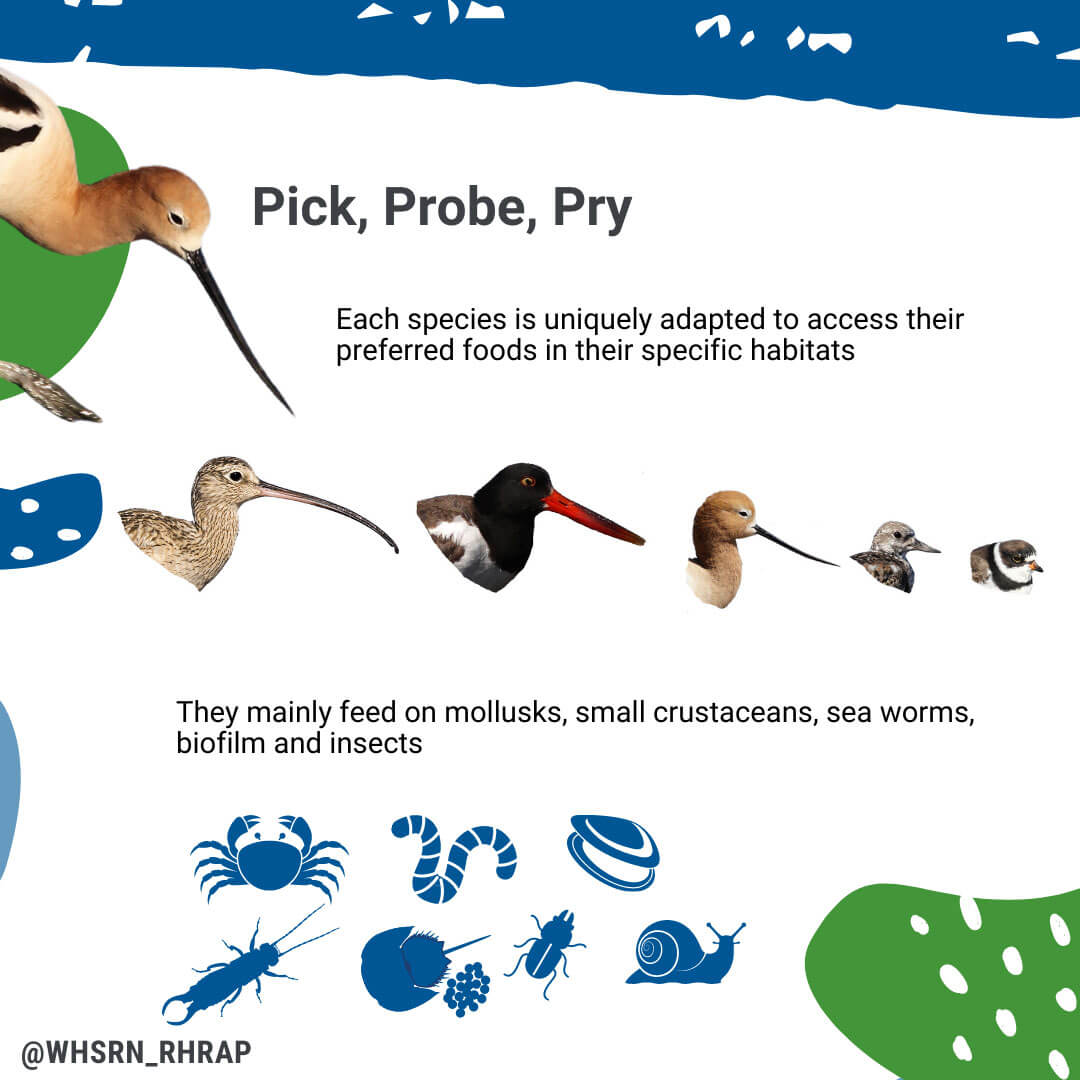
- The downcurved beak of a Whimbrel’s (Numenius phaeopus) is a veritable Swiss Army knife. The curvature facilitates access to fiddler crabs’ arched burrows, but also offers a large ‘touch-area’ and improves grasp.
- American Oystercatcher uses its thick, flattened bill to wedge open bivalve mollusks or hammer them against rocks.
- The up curved bill of an American Avocet (Recurvirostra americana) is another unique bill. Swished from side to side underwater, it captures both prey and water but filters out the latter through hair-like structures called lammelae, which are rather like tiny versions of rorqual whales’ baleen plates.
- The chisel-like beak of the Ruddy Turnstone (Arenaria interpres) helps it search below seaweed and even flip sizeable stones.
- Plovers’ short, stubby beaks means they pick, peck and pluck prey from beach, mud or rock.
Sensory Sorcery
Ecologist Theunis Piersma discovered that Red Knot, Dunlin, Least Sandpiper (Calidris minutilla) and other strandline probers can detect ‘pressure gradients’ caused by prey buried in mud. Piersma revealed that the hollow sheath of the shorebirds’ bill tip contains ‘sensory pits’ packed with sensitive nerve-endings. These ‘Herbst corpuscules’ enable a probing bird to ‘see’ through murky water: Sanderlings can detect worms up to 2cm away – almost an entire bill length.
Plover Vision
To spot tiny prey often many body lengths away, plovers require acute vision which explains the conspicuously large eyes of plovers.
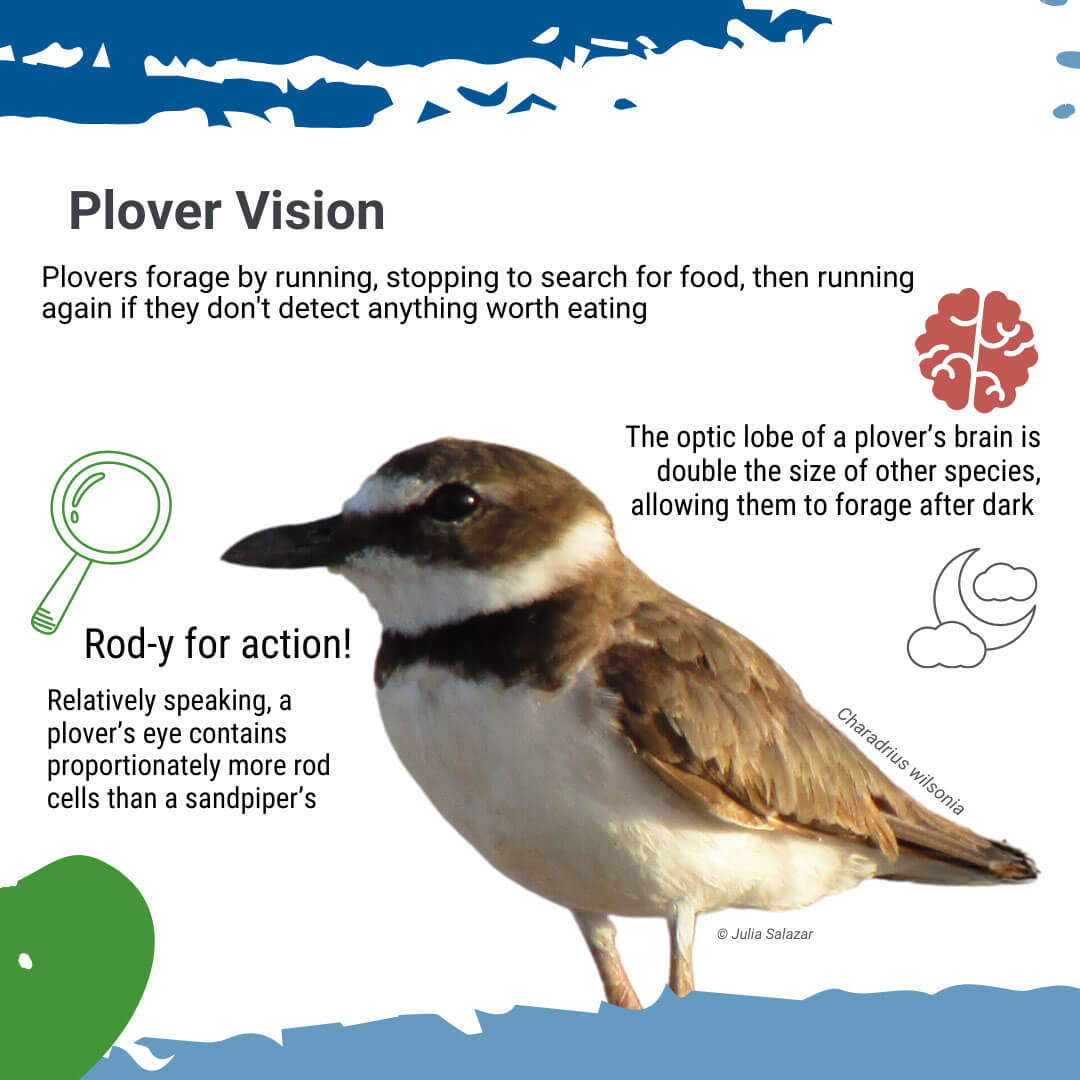
Too Much Salt
Swallowing salt, whether through marine prey or seawater, can play havoc with a bird’s internal hydration. Most birds lack mechanisms to deal with this pressure – but not shorebirds. Their main adaptation is salt glands, which enable a shorebird to drain excess salt from the bloodstream. The glands’ size depends on how much use they will get. Gland size can also vary seasonally. In the non-breeding season, Red Knot have very large glands because they cannot avoid ingesting saltwater when gulping down bivalves. When nesting inland, however, Knot have no need to invest in such equipment, so shrink the glands.
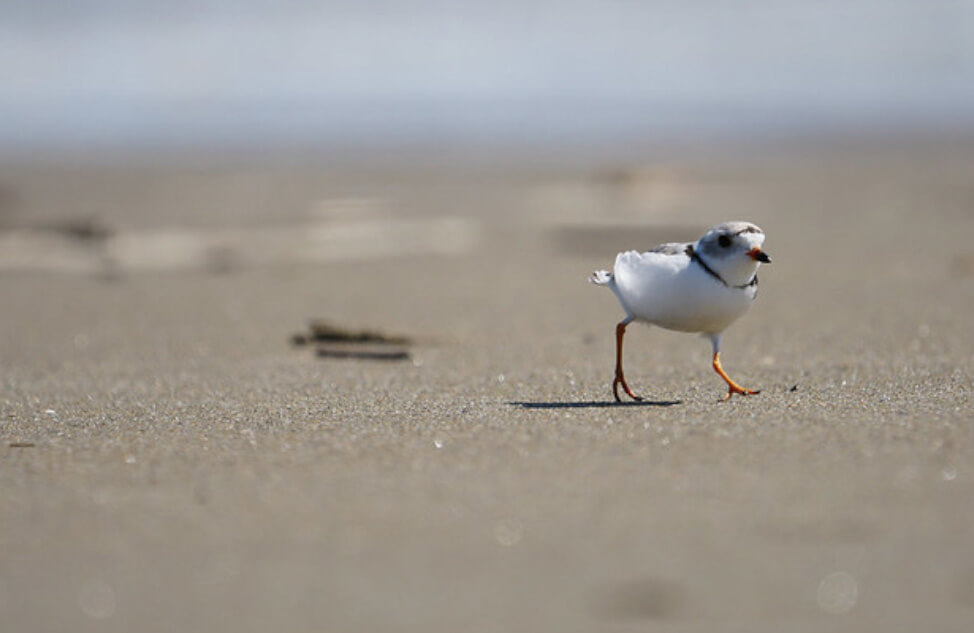
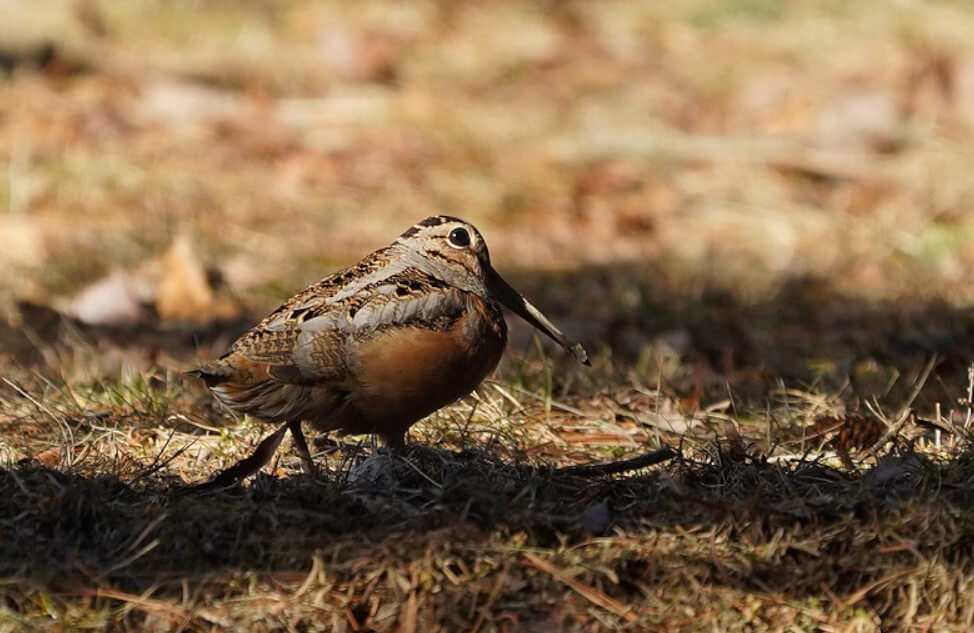
Right: Beach-loving plovers have larger salt glands than freshwater-favoring shorebirds. Left: American Woodcock (Scolopax minor) never encounters saltwater habitats so has none at all. Photos: Maina Handmaker
The Swimming Shorebird
Of all shorebirds’ lives, none are more entwined with salt than phalaropes’. Red-necked Phalaropes Phalaropus lobatus may spend nine months per year at sea, Red Phalaropes fulicarius eleven. Even the inland-dwelling Wilson’s Phalarope prefers salt lakes as migratory stopovers and wintering quarters. Shorebird specialist, Joseph Jehl, was surprised to learn that Wilson’s Phalarope bodies did not contain excessive salt, then was utterly taken aback to find that this was not due to management through salt glands, the relative size of which were no bigger than other shorebirds. Instead, Jehl discovered, phalaropes use surface tension to work water droplets up the bill then squeeze out salty liquid before swallowing the prey.
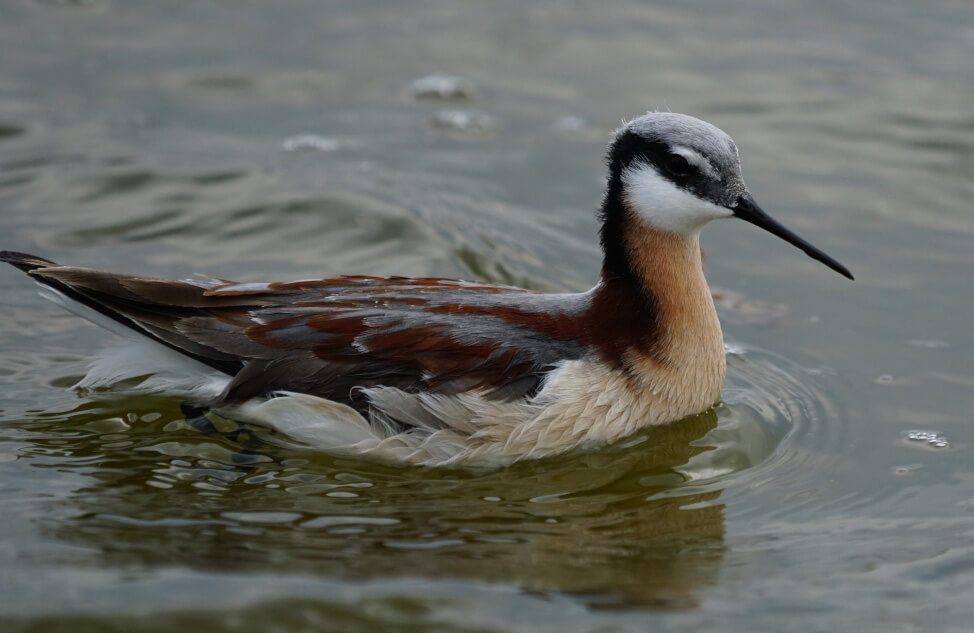
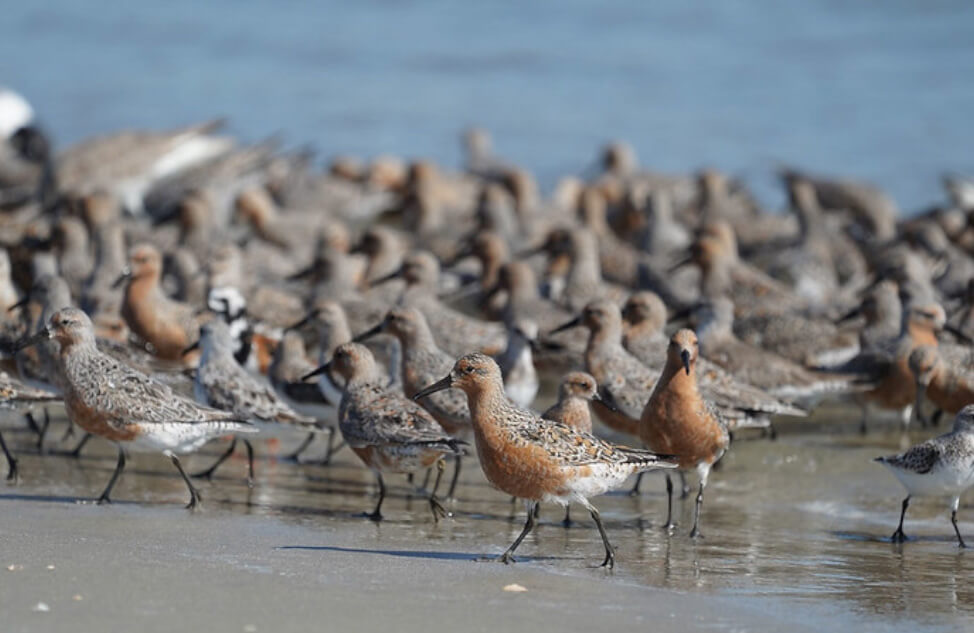
Right: A unique adaptation allows Wilson’s Phalaropes to utilize highly saline lakes. Left: Red Knots are one of the species of shorebirds that will reduce the size of organs in order to increase heart and pectoral muscles for migration. Photos: Maina Handmaker
Shrinking Organs
Undoubtedly the cleverest trick of the migratory shorebird’s trade, however, is some species’ ability to shrink body organs, thereby making room for journey-powering muscles and fat reserves. Both Wilson’s Phalarope and Semipalmated Sandpiper are known to double their weight in rapid time before migrating (indeed, some phalaropes examined by Joseph Jehl became temporarily too fat to fly)! Studies of migrant Red Knot show that as overall weight increased so did that of their pectoral and heart muscles – but that they compensated by shrinking intestines, liver, gizzard, stomach and leg muscle to reduce the burden carried in flight. Upon arrival at breeding grounds, with migratory job done, organ sizes returned to normal.
Cover Photo: Shorebirds with legs of different lengths and bills of different shape can share the same habitat without competing for prey. Photo: Maina Handmaker.






